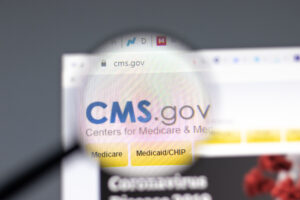More than three months after the COVID-19 outbreak was declared a global pandemic states are now beginning to ease stay-at-home orders and lift restrictions. Plans to reopen introduce behavioral changes that ultimately create a “new normal,” or a new way of going about daily life, work, travel, and even healthcare routines.
Like other services deemed “essential,” primary care practices remained open for business during the COVID-19 pandemic, but business looked drastically different for healthcare providers. Many practices adopted telehealth, with exceptions for critical in-person care. We recently discussed the challenges PCPs faced due to COVID-19, which included a massive decline in patient volume, revenue, and a reduction in staff. We were hopeful this perfect storm would pass, and it is beginning to: primary care practices have largely resumed their standard hours of operation and are able to see patients for routine and preventive care. Even CMS Administrator, Seema Verma, is championing a return to routine care and recently penned an op-ed urging people to “get back to non-COVID healthcare.” Yet, to maintain volume and extend preventive care, it’s essential for PCPs to continue offering telehealth and other flexible workflows.
Patients, especially seniors, want to go back
Though it won’t happen overnight, the primary care setting is poised to rebound due to pent up demand. Patients need preventive and routine healthcare, and many prefer to be seen in person. This is especially true among older populations. A June 2020 William Blair Equity Research survey found that 80% of the patient visits cancelled or postponed due to COVID-19 are still needed and likely to be rescheduled. Surprisingly, the number of cancellations driven by fear of in-office COVID-19 exposure was lower in older populations than in younger ones. For the majority (63%) of seniors aged 65+, cancellations were driven by the logistical challenges of office closures and stay-at-home orders, among other reasons. Seniors generally have greater care needs and may be willing to return for care sooner, with the proper protocols to protect patient safety.
Continued telehealth usage
While this data provides some hope about the improvement in patient volume, the reality is, some patients will remain cautious about visiting their PCPs. Fortunately, many providers focused on developing and strengthening their telehealth infrastructure during the pandemic which will continue to serve them well in a post-pandemic world. Analysts expect heightened telehealth use to continue as new pockets of the coronavirus bubble up across the U.S.
With telehealth, providers can recoup lost revenue and bridge the gap between their “new normal” in-office volume and their pre-COVID-19 volume. Additionally, though some patients may be returning to the practice, some employees may not. Telehealth can also help equip practices that may be short-staffed with the tools and technology to provide quality care on a larger scale.
New federal legislation also signals that telehealth is being prioritized and will be permanent. Since April, the COVID-19 Telehealth Program, created by The Federal Communications Commission (FCC), has doled out more than half of its allotted funding to help healthcare providers build or bolster their telehealth infrastructure and services. Additionally, CMS and commercial payers alike have responded favorably by making sweeping changes to telehealth restrictions, requirements, and reimbursement policies, including in the area of risk adjustment.
Adjusting to this “new normal” will require patience, but for PCPs that have weathered the COVID-19 pandemic, there is a light at the end of the tunnel. Whether patients are in the office or on the screen, PCPs can continue to leverage telehealth to generate revenue, help patients stay on track, and keep their practices financially stable in a post-pandemic environment.
To hear more from our team and Vatica Health PCPs using telehealth to improve their practice performance and patient experience, watch the on-demand webinar.











